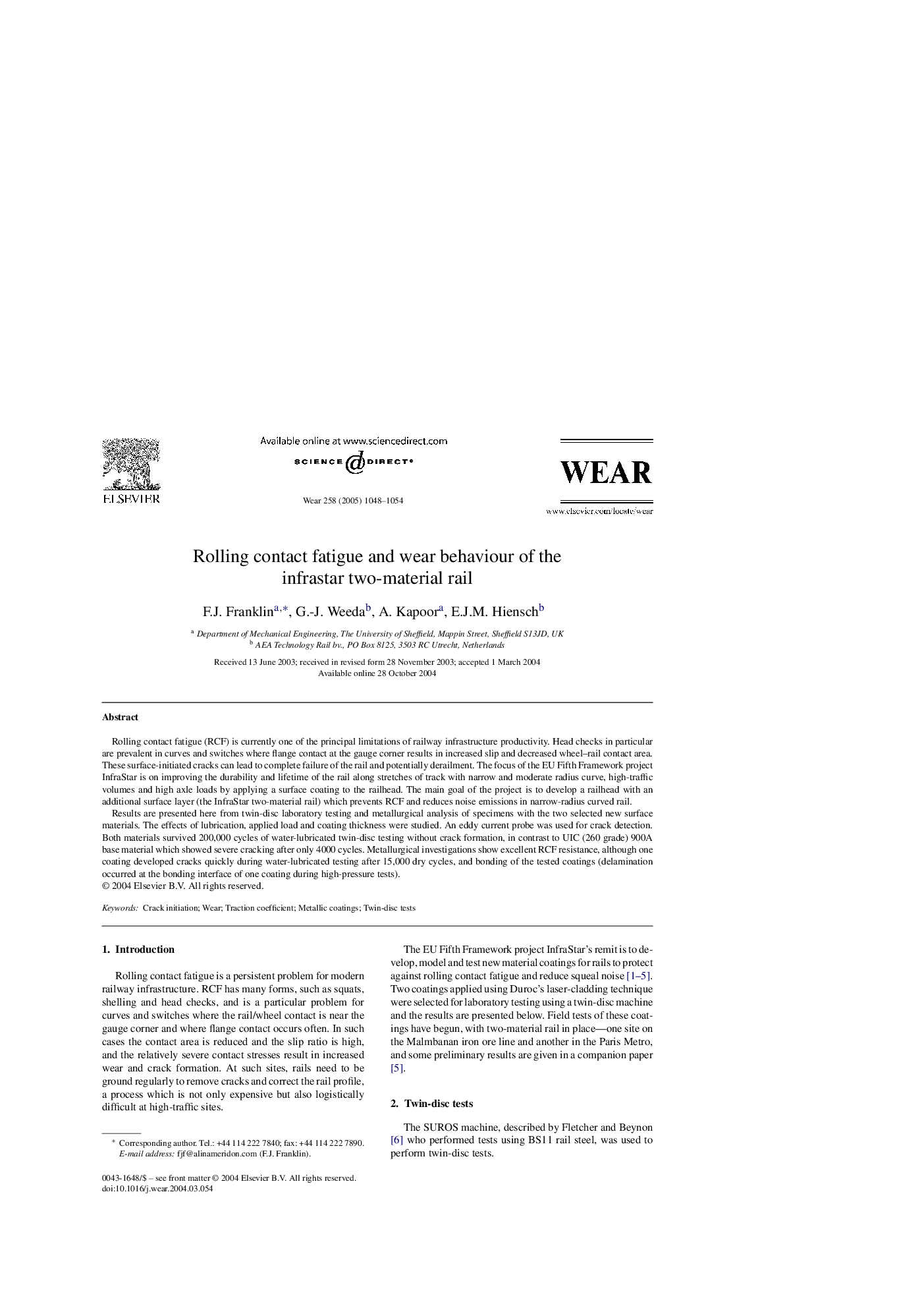| Article ID | Journal | Published Year | Pages | File Type |
|---|---|---|---|---|
| 9679522 | Wear | 2005 | 7 Pages |
Abstract
Results are presented here from twin-disc laboratory testing and metallurgical analysis of specimens with the two selected new surface materials. The effects of lubrication, applied load and coating thickness were studied. An eddy current probe was used for crack detection. Both materials survived 200,000 cycles of water-lubricated twin-disc testing without crack formation, in contrast to UIC (260 grade) 900A base material which showed severe cracking after only 4000 cycles. Metallurgical investigations show excellent RCF resistance, although one coating developed cracks quickly during water-lubricated testing after 15,000 dry cycles, and bonding of the tested coatings (delamination occurred at the bonding interface of one coating during high-pressure tests).
Related Topics
Physical Sciences and Engineering
Chemical Engineering
Colloid and Surface Chemistry
Authors
F.J. Franklin, G.-J. Weeda, A. Kapoor, E.J.M. Hiensch,
